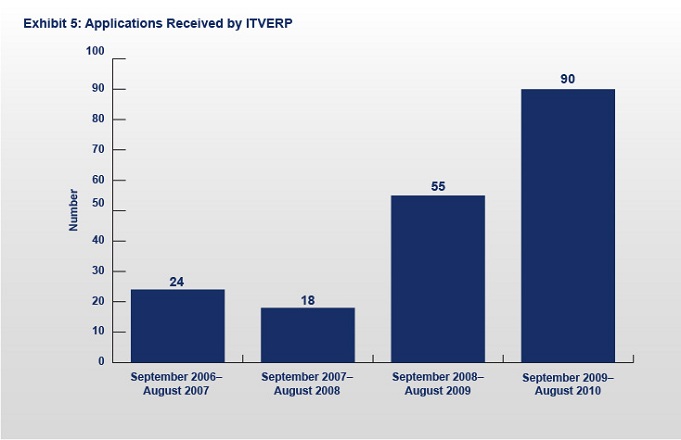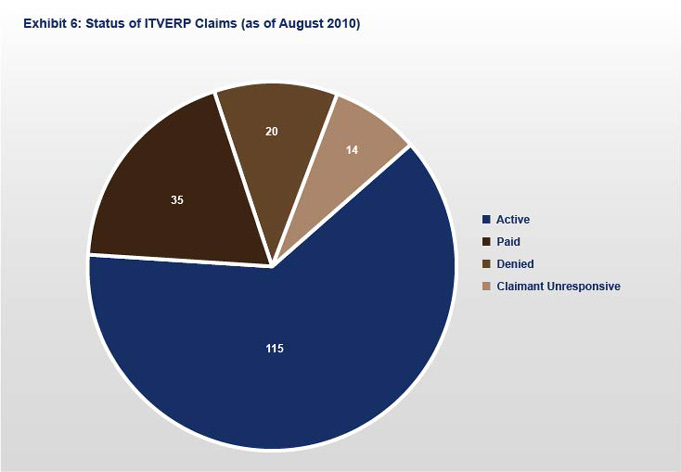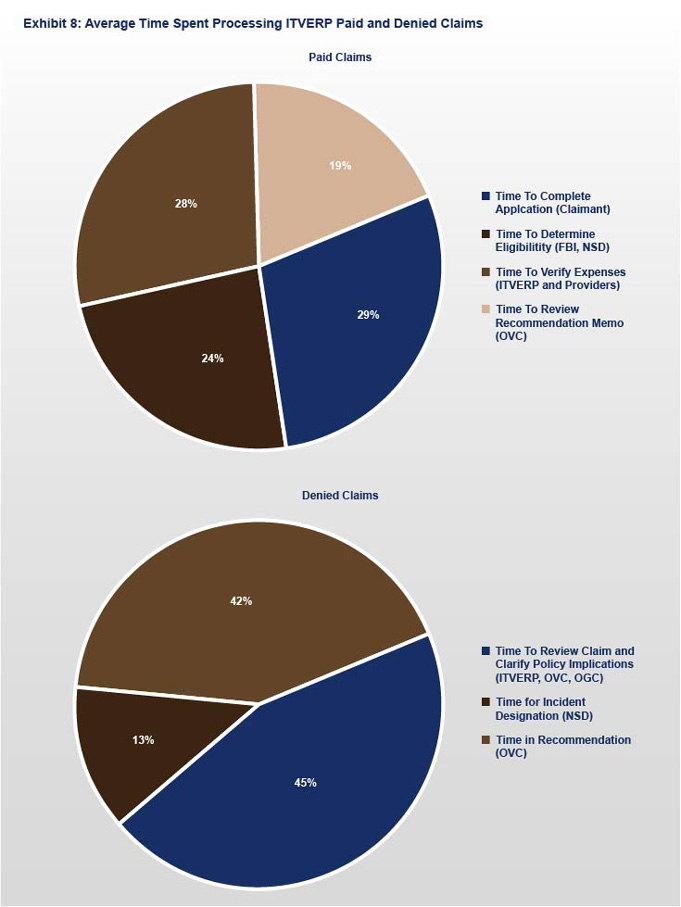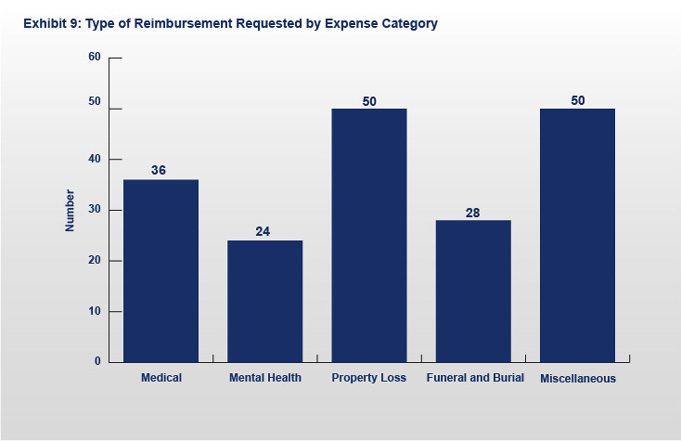Reimbursement Activities
- The number of applications received;
- The status of claims;
- The current processing time for claims;
- Details regarding reimbursements paid to claimants; and
- The number of appeals under the program to date.
Applications Received and Processed
ITVERP received 90 new applications for reimbursement during this reporting period. The applications reflect terrorist incidents dating from June 14, 1985, to September 17, 2009. Exhibit 5 illustrates the number of applications received during each ITVERP reporting period since the program’s inception in 2006.
During this reporting period, one of the program’s first filing deadlines for receipt of ITVERP applications was reached. October 6, 2009, marked the filing deadline for any terrorist incidents that occurred between December 21, 1988, and October 6, 2006. In October 2009, ITVERP received 32 applications from Foreign Service Nationals (FSN) (or their surviving spouses) who were injured or killed as a result of the U.S. Embassy bombing that occurred on August 7, 1998, in Nairobi, Kenya. (Foreign Nationals are not nationals of the United States, but work for the U.S. Government, typically at an embassy or consulate abroad.) These applications represent the first ITVERP claims filed by FSNs.

Status of Claims
As claims reach certain phases in the application process, OVC assigns them a status. In general, a claim is either active or inactive. Active claims include those that are in process, pending National Security Division (NSD) designation, and those partially paid. Active claims may be in process for several weeks while eligibility and expenses are verified, additional information is requested, etc. Frequently, claimants initiate the application process but do not provide complete information. Claimants have 120 calendar days from the time ITVERP receives their initial application to provide the necessary information or the claim will become inactive. Inactive claims are those that have been denied or designated as "claimant unresponsive." The other status assigned to claims is paid. A claim is considered paid after a claimant receives payment.
At the end of this reporting period, there were 115 total active claims, 104 claims were in process, 4 claims were pending NSD designation, and 7 claims were partially paid. ITVERP has paid 35 claims, denied 20 claims, and designated 14 claims inactive/unresponsive. Exhibit 6 depicts the status of all ITVERP claims.

Processing Time
Processing ITVERP claims requires verification of claimant eligibility and that the expenses submitted are processed in compliance with ITVERP regulations. Denied claims typically require less time to process than those found to be eligible for reimbursement because the factors that make a claim ineligible (e.g., claimant does not meet eligibility requirements) are identified in the initial steps of the claims process. Exhibit 7 shows the average length of time to process the 35 paid and 20 denied claims completed at the end of this reporting period.

Exhibit 8 shows the amount of time spent in different steps in the claims process, broken down by paid and denied claims.

Reimbursement Requests by Expense Categories
Potential claimants who have incurred multiple expenses as a result of their victimization may apply for reimbursement in more than one expense category. ITVERP case managers work closely with claimants and potential claimants to assess and fully identify their needs to ensure they receive the maximum reimbursement allowable. Exhibit 9 shows the number of reimbursements requested, by category, during the reporting period. Many claimants applied for reimbursement under multiple expense categories.


